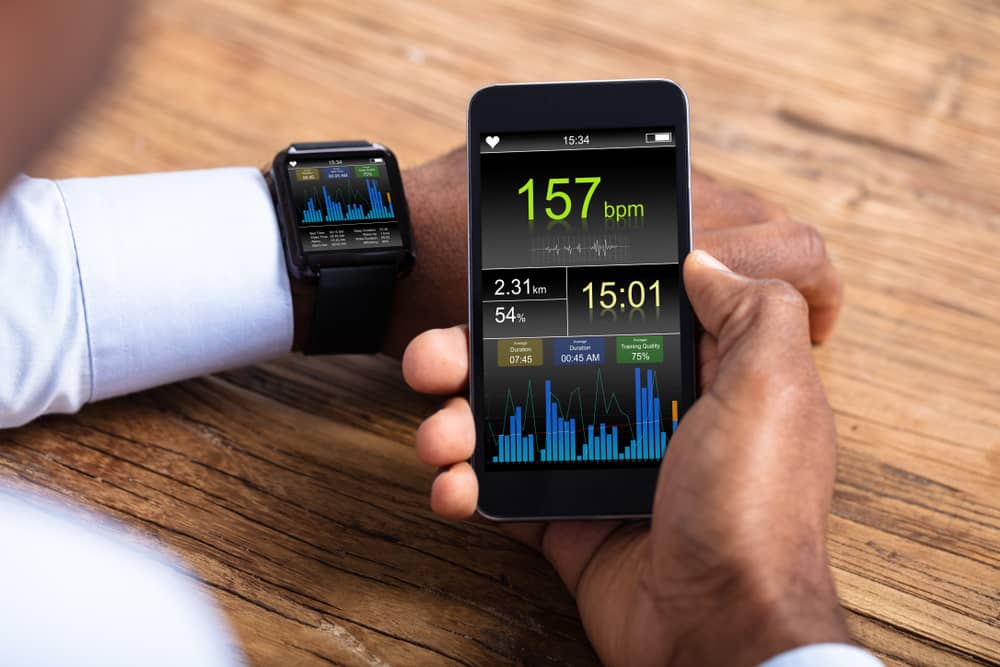How Remote Patient Monitoring Improves At-Home Healthcare

When implemented effectively, remote patient monitoring solutions help improve patient outcomes, reduce costs, and more.
Remote patient monitoring (RPM) refers to the use of digital technologies to securely — and remotely — collect patient medical data and transmit it to healthcare providers.
Experts anticipate that the RPM market will be worth $2.14 billion in 2027 — almost three times the market’s 2019 value of $786.4 million. While the COVID-19 pandemic has certainly accelerated the adoption of RPM solutions, other factors, like advancements in Internet-of-Things (IoT) technology and growing consumer interest in telehealth initiatives have driven the market for years.
In 2019, 64% of patients age 40 and over said they would be willing to use wearable health monitoring devices if doing so would reduce the need for in-person visits with their healthcare practitioner. That same year, 88% of surveyed healthcare providers either already had adopted RPM technologies or were in the process of evaluating it — and for good reason. RPM technologies help providers monitor and assess multiple patients with ease, improving patient outcomes while reducing readmission rates.
Reaping the Benefits of RPM Solutions
When implemented effectively, RPM solutions, like heart monitors and Bluetooth-enabled scales, can transform the healthcare landscape. The University of Pittsburgh Medical Center found that using patient surveys, educational videos, and live telehealth visits in combination with RPM devices led to more effective use of emergency room resources, higher patient compliance and satisfaction, and faster detection of patients who were critically ill at home. In fact, Medicare patients enrolled in the hospital’s RPM program were 76% less likely to be readmitted.
RMP technologies also help healthcare organizations significantly reduce operational costs by empowering patients to receive high-quality care at home, minimizing the demand for hospital beds and other infrastructural resources and services. The Veterans Health Administration — an early adopter of telehealth solutions — estimates that RPM solutions save the organization $6,500 per patient each year, while another study found that widespread adoption of RPM technologies and telehealth services could result in annual savings of more than $6 billion in the U.S. alone.
Other benefits include improving patients’ access to their health data and the ability to better address gaps in the healthcare landscape. Virtual maternity solutions, for instance, can help alleviate OB/GYN shortages and improve patient outcomes, particularly for at-risk populations.
Common Roadblocks to RPM Device Implementation
As with any technological initiative, many end users face challenges when implementing RPM programs, including:
- Network availability and connectivity: Network availability and connectivity are of paramount importance, particularly on the patient side. Interruptions in service or network access can delay diagnoses or impede monitoring for patients with critical heart or brain conditions.
- End-user training: Learning how to use RPM devices can be challenging for patients and practitioners, decreasing rates of adoption and leading to poor end-user satisfaction.
- Data security: As the rate of cyberattacks increases, data security and privacy have become top priorities — especially within healthcare. RPM devices are not exempt from this risk, as they rely on digital networks to operate.
Fortunately, these challenges and others can be negated with proper planning and end-user training. When healthcare providers and their patients understand how RPM devices work and the steps they need to take to implement them effectively, the benefits of these technologies are quickly realized.
Putting New Solutions Into Play
At Epiphany, we help healthcare organizations boost patient satisfaction, improve access to care, and reduce costs through the successful implementation of a wide range of technology, including RPM devices.
Via our remote and on-site training sessions, we empower end users to deploy new tools with confidence. We also provide live support 24 hours a day, seven days a week, working with patients and practitioners to troubleshoot any issues that arise in real-time during technology rollouts and beyond. Are you ready to maximize the effectiveness of your medical devices? Contact us today to learn more.




